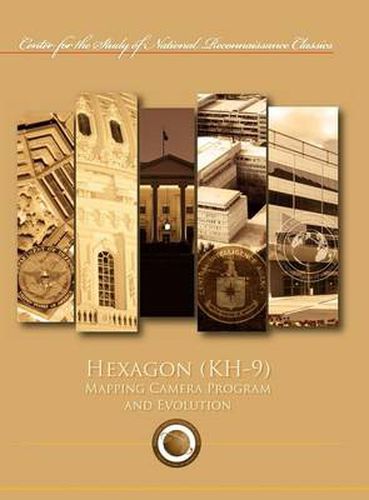Readings Newsletter
Become a Readings Member to make your shopping experience even easier.
Sign in or sign up for free!
You’re not far away from qualifying for FREE standard shipping within Australia
You’ve qualified for FREE standard shipping within Australia
The cart is loading…






This title is printed to order. This book may have been self-published. If so, we cannot guarantee the quality of the content. In the main most books will have gone through the editing process however some may not. We therefore suggest that you be aware of this before ordering this book. If in doubt check either the author or publisher’s details as we are unable to accept any returns unless they are faulty. Please contact us if you have any questions.
Includes full color and black and white illustrations and photographs. Recently declassified history from the Center for the Study of National Reconnassiance, National Reconnaissance Office. From the preface: Written in 1982 by Maurice G. Burnett at the request of the Director of the Air Force Program at the NRO, known as Program A. The Hexagon apping camera flew on 12 of the 20 Hexagon missions. It proved to be a remarkably efficient and prodigious producer of imagery for mapping purposes. The mapping camera system was successful by every standard including technical capabilities, reliability, and capacity.Hexagon Mapping Camera Program and Evolution is very unique among the histories of the Gambit and Hexagon programs for two reasons. Burnett provides a comprehensive history of the development of imagery satellites. The volume is very useful for individuals who want to become familiar with the development of these systems as well as the evolution of the Air Force’s Program A at the NRO. Second, Burnett also provides a very detailed history of the mapping camera system including technical development as well as the operation of the mapping camera system. Burnett prepared a history that is further strengthened by the visual content he chose to enhance the historical narrative. Hexagon Mapping Camera Program and Evolution includes multiple photographs, engineering drawings, and examples of satellite imagery. This content gives readers, especially those interested in the development of satellite imagery, another reason to read this volume.
$9.00 standard shipping within Australia
FREE standard shipping within Australia for orders over $100.00
Express & International shipping calculated at checkout
This title is printed to order. This book may have been self-published. If so, we cannot guarantee the quality of the content. In the main most books will have gone through the editing process however some may not. We therefore suggest that you be aware of this before ordering this book. If in doubt check either the author or publisher’s details as we are unable to accept any returns unless they are faulty. Please contact us if you have any questions.
Includes full color and black and white illustrations and photographs. Recently declassified history from the Center for the Study of National Reconnassiance, National Reconnaissance Office. From the preface: Written in 1982 by Maurice G. Burnett at the request of the Director of the Air Force Program at the NRO, known as Program A. The Hexagon apping camera flew on 12 of the 20 Hexagon missions. It proved to be a remarkably efficient and prodigious producer of imagery for mapping purposes. The mapping camera system was successful by every standard including technical capabilities, reliability, and capacity.Hexagon Mapping Camera Program and Evolution is very unique among the histories of the Gambit and Hexagon programs for two reasons. Burnett provides a comprehensive history of the development of imagery satellites. The volume is very useful for individuals who want to become familiar with the development of these systems as well as the evolution of the Air Force’s Program A at the NRO. Second, Burnett also provides a very detailed history of the mapping camera system including technical development as well as the operation of the mapping camera system. Burnett prepared a history that is further strengthened by the visual content he chose to enhance the historical narrative. Hexagon Mapping Camera Program and Evolution includes multiple photographs, engineering drawings, and examples of satellite imagery. This content gives readers, especially those interested in the development of satellite imagery, another reason to read this volume.